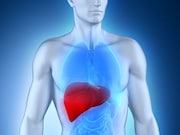Achieving WHO targets for diagnosis, treatment by 2030 will be cost-effective at $103 per QALY
THURSDAY, July 26, 2018 (HealthDay News) — Meeting World Health Organization (WHO) targets for chronic hepatitis B by 2030 will be cost-effective, according to a report published in the July issue of Health Affairs.
Mehlika Toy, Ph.D., from the Stanford University School of Medicine in California, and colleagues examined the economic and public health impact of reaching the WHO targets of diagnosing and treating 90 and 80 percent of chronic hepatitis B cases, respectively, by 2030 in the United States.
The authors note that in order to reach the targets by 2030, approximately 14.5 million adults in at-risk populations would need to be screened to diagnose an estimated 870,000 undiagnosed cases. This would result in an increase of 16.5 million quality-adjusted life-years (QALYs) and reductions of 37, 24, 51, and 35 percent in liver-related deaths, compensated cirrhosis, decompensated liver cirrhosis, and liver cancer, respectively. Achievement of these targets by 2030 would be highly cost-effective ($103 per QALY); if the antiviral drug price were no more than $114 per month, it would be cost-saving. Achievement of targets by 2025 would be cost-saving, with a liver-related death reduction of 47 percent.
“Investing in additional chronic hepatitis B screening and treatment to reach the 2030 WHO targets of 90 percent of cases diagnosed and 80 percent being treated in the United States would be highly cost-effective at $103 per QALY and would avert 37 percent of chronic hepatitis B-related deaths,” the authors write.
2018 World Hepatitis Day is Saturday, July 28.
Copyright © 2018 HealthDay. All rights reserved.








